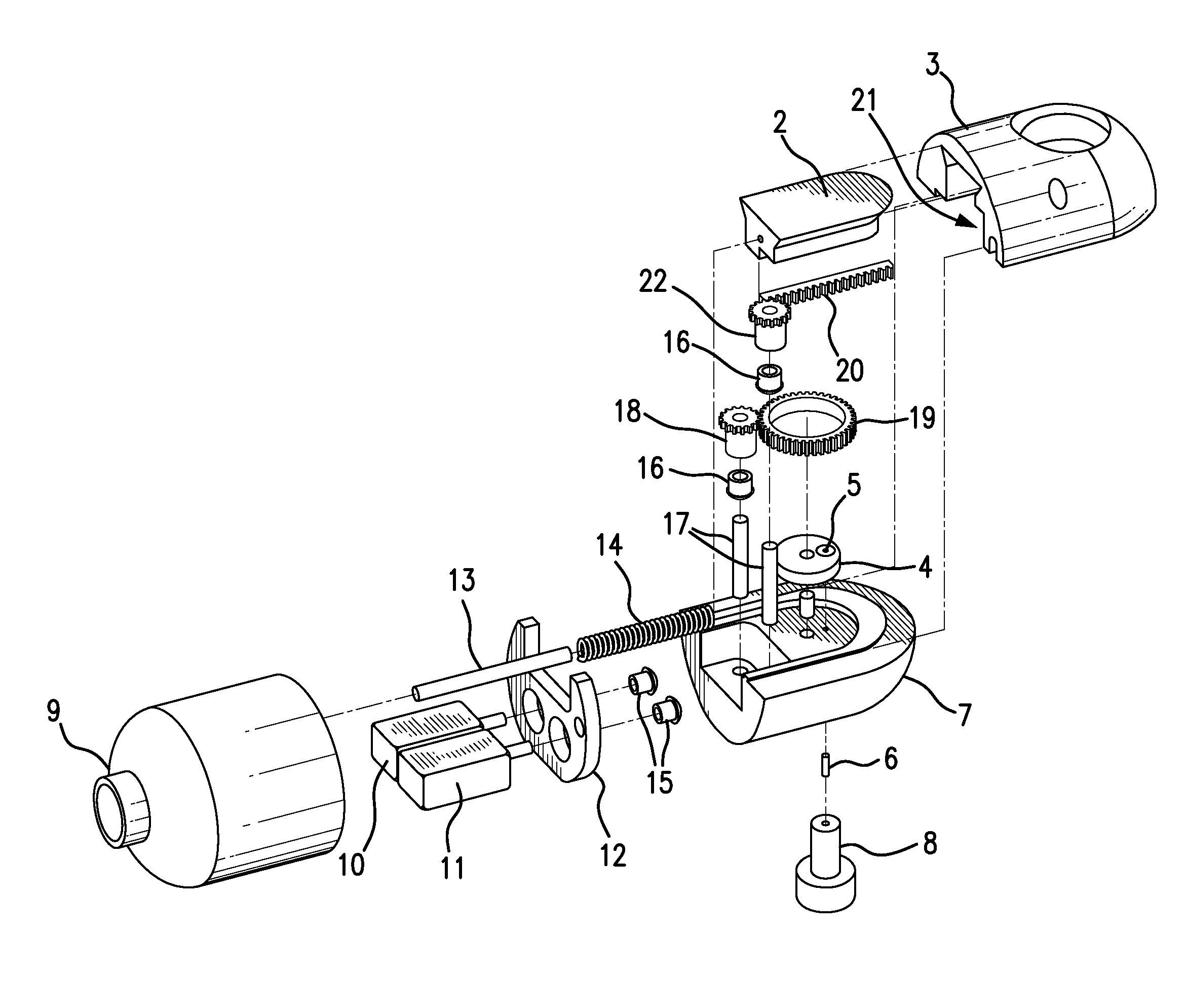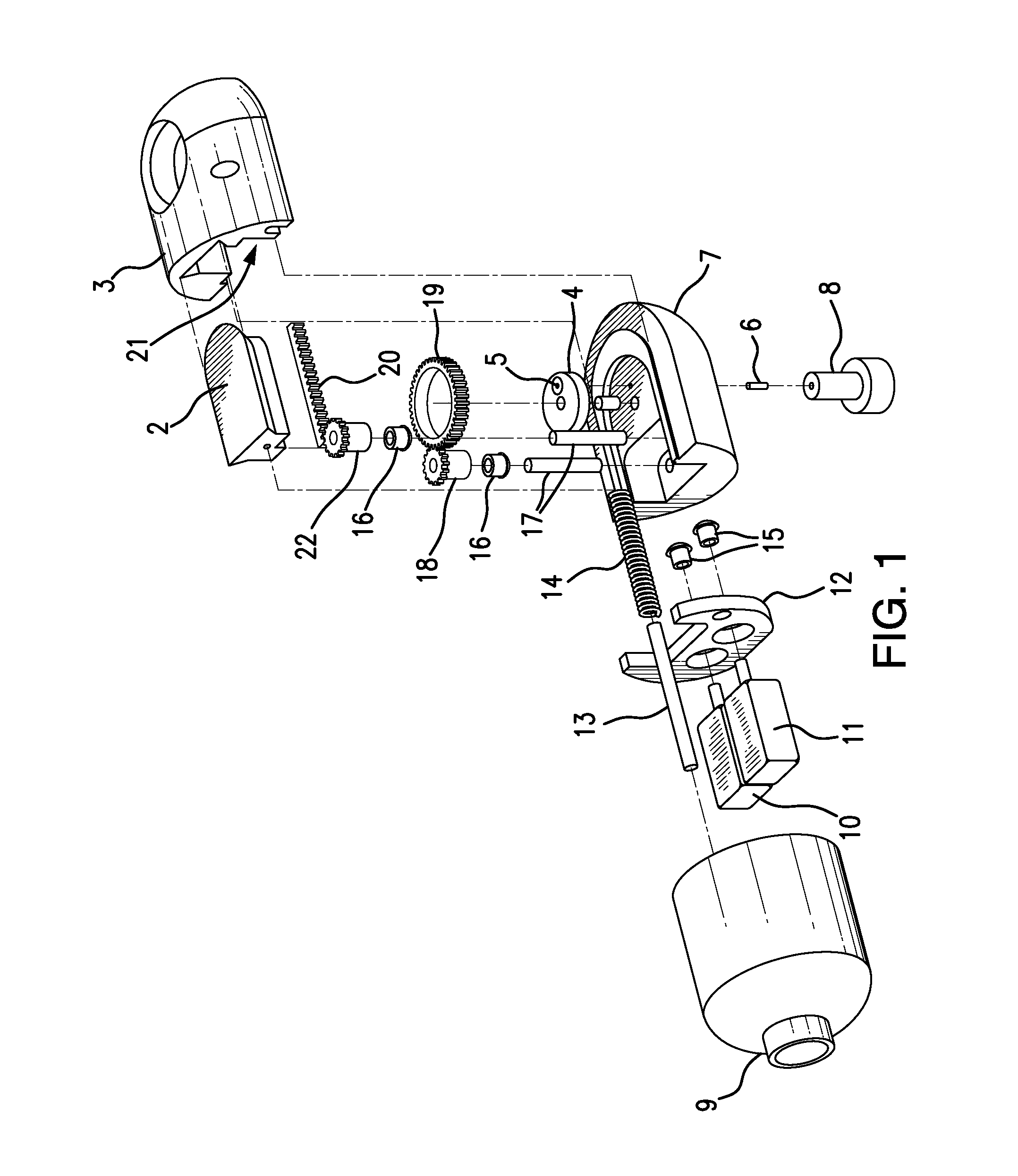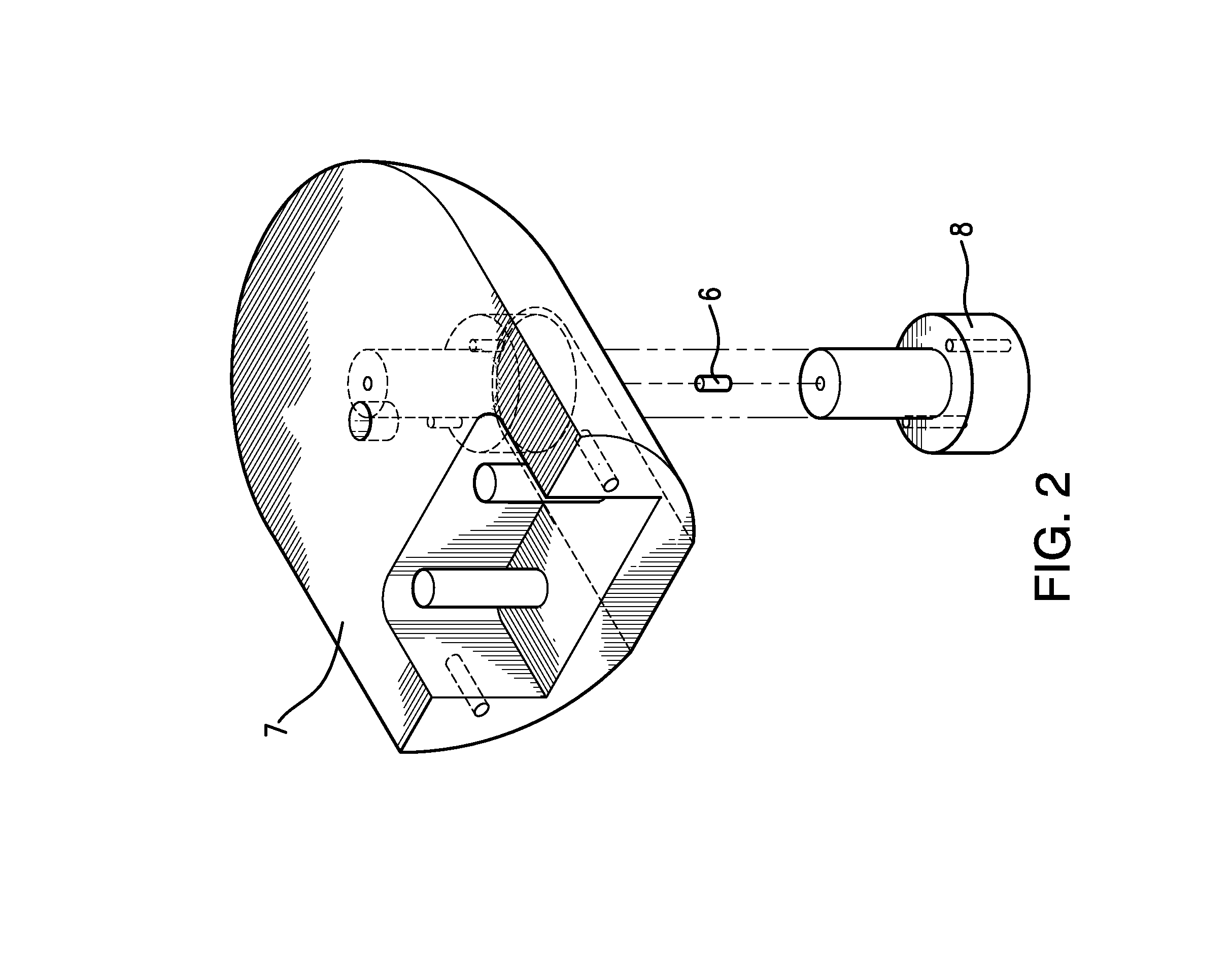Traditionally, intraoperative
radiation therapy has been delivered via large, cumbersome linear accelerators and via injections of radioactive substances, both of which can cause substantial collateral damage and
resultant morbidity and have not been shown to substantially improve outcomes.
A significant and longstanding problem with many cancers, such as
ovarian cancer, is that upon resection (
surgery), it is difficult to obtain what is referred to as a clear margin, or optimal debulking, that is a complete
surgical removal of all
cancer, including microscopic
cancer.
As a result, residual cancer cells frequently remain, and may (and often do) break off from the
primary cancer and migrate to other locations which are difficult to reach and destroy.
The metastatic cancer cells will then begin to grow using the local
blood supply of the new site of involvement, eventually compromising
organ function, and ultimately destroying the organ; frequently resulting in death.
Traditional
external beam radiation therapy techniques frequently are ineffective in treating such localized metastases due to the relative
toxicity of radiation delivered to the involved organ.
A
dose of radiation sufficient to destroy the cancer will be likewise fatal to the involved tissue or organ at issue due to the inability in the non-operative setting to deliver a specific
dose to only the cancerous lesions.
The inability of external beam radiotherapy to precisely target a small
metastatic lesion is well documented and relates toa.) inability to visualize small lesions on CT / MR / PET with high precisionb.) inability to identify and track
organ motion in real time for the period needed to precisely target a small cancerous lesionc.) inability to
restrict the external beam
dose using conventional, conformal, IMRT, cyberknife or
tomography techniques to the cancerous lesions enough to deliver sufficient dose to the tumor without unacceptable normal
organ damage.< /
That is, the larger the volume of residual
disease, the poorer the prognosis.
Radiation therapy has been tried without success in treating abdominal cancers in general, due the inability to deliver dose specifically to sites of residual
disease without producing unacceptable morbidity and mortality due to the
highly sensitive normal tissues in the
abdomen.
Intraoperative
radiation therapy has not been widely adapted due to the previous inability to precisely deliver radiation to tumors while minimizing dose to normal tissues.
The technologies that make this possible have allowed the design of precision radiation fields to treat cancers in ways that were previously not possible, but have a clumsy aspect because of their size. which renders them unable to be precisely manipulated into a position where the therapeutic beam can be optimally aimed to provide maximum therapeutic
advantage: i.e., the targeting of high risk tumor areas while avoiding dose to uninvolved tissue.
This difficulty is particularly problematic in the treatment of abdominal cancers where tumors are often on or near radiation-sensitive vital organs.
The radiation oncologist is not able to manipulate an external beam of radiation sufficiently to avoid collateral damage of other healthy tissues in the
abdominal cavity.
As previously stated, intraoperative radiation post-
surgical therapy and therapy during
surgery have been delivered via large, cumbersome linear accelerators and via injections of radioactive substances, both of which can cause substantial collateral damage and
resultant morbidity and have not been shown to substantially improve outcomes.
By way of further background, currently, intra-operative radiation therapy has been delivered via large, cumbersome linear accelerators.
These have been shown to substantially improve outcomes, but have harsh side effects.
For
ablation of internal tissue by a linear accelerator, a patient has to be surgically open and due to the
large size and heavy shielding requirements, the procedure is infrequently used or not available.
 Login to View More
Login to View More  Login to View More
Login to View More 


